Summer at Our Sites
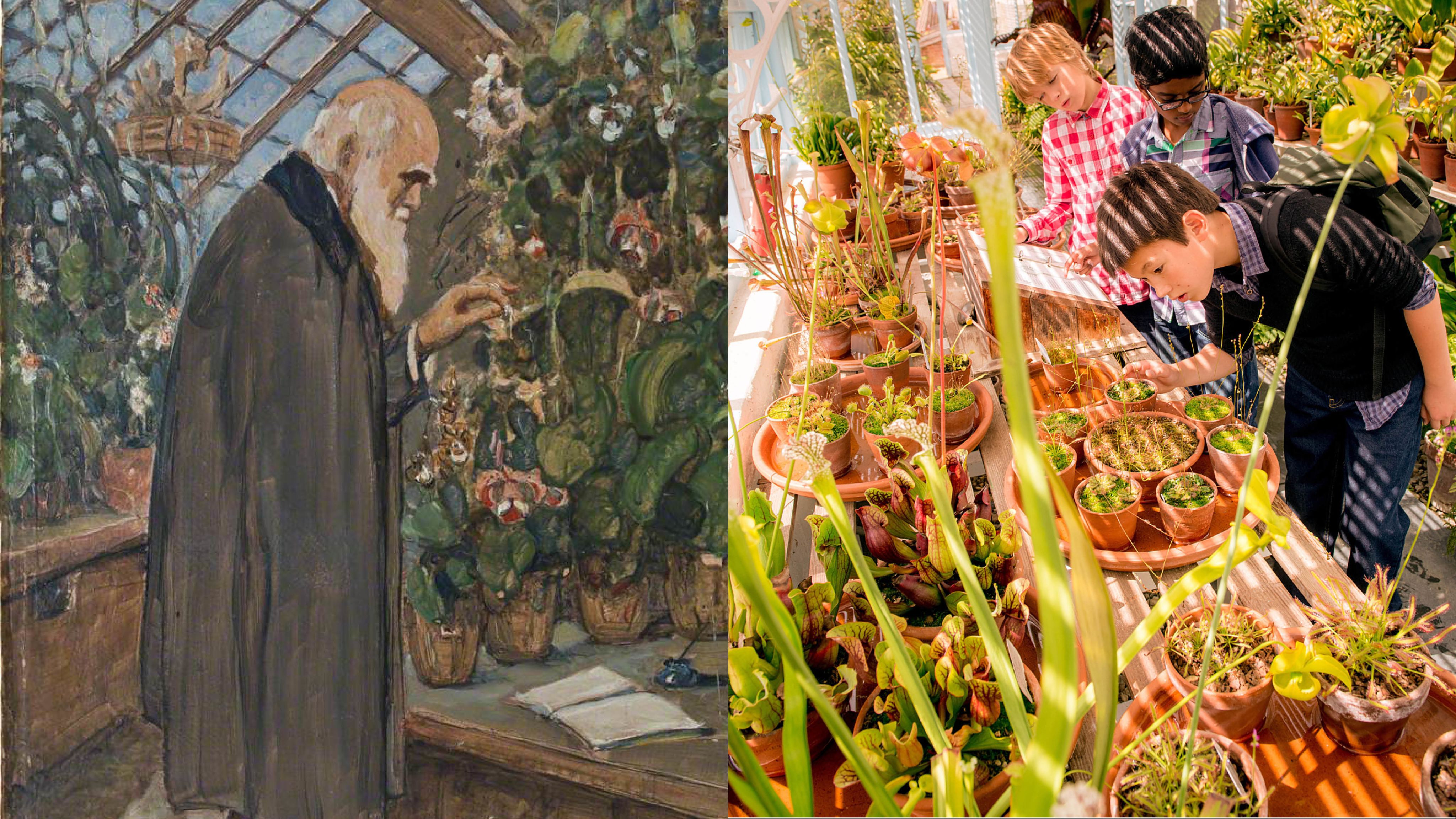
The summer months at our sites, whether it’s 1624, 1824 or 2024 have always been scenic. The only difference is, these days, you’re unlikely to be passing Queen Victoria on your walk around Osborne or bumping into Charles Darwin as you inspect his greenhouse.
But as you’ll see in the paintings below, many of our sites have remained unchanged since being enjoyed by the kings, queens, scientists, courtiers, visitors and even livestock that walked their grounds centuries ago.
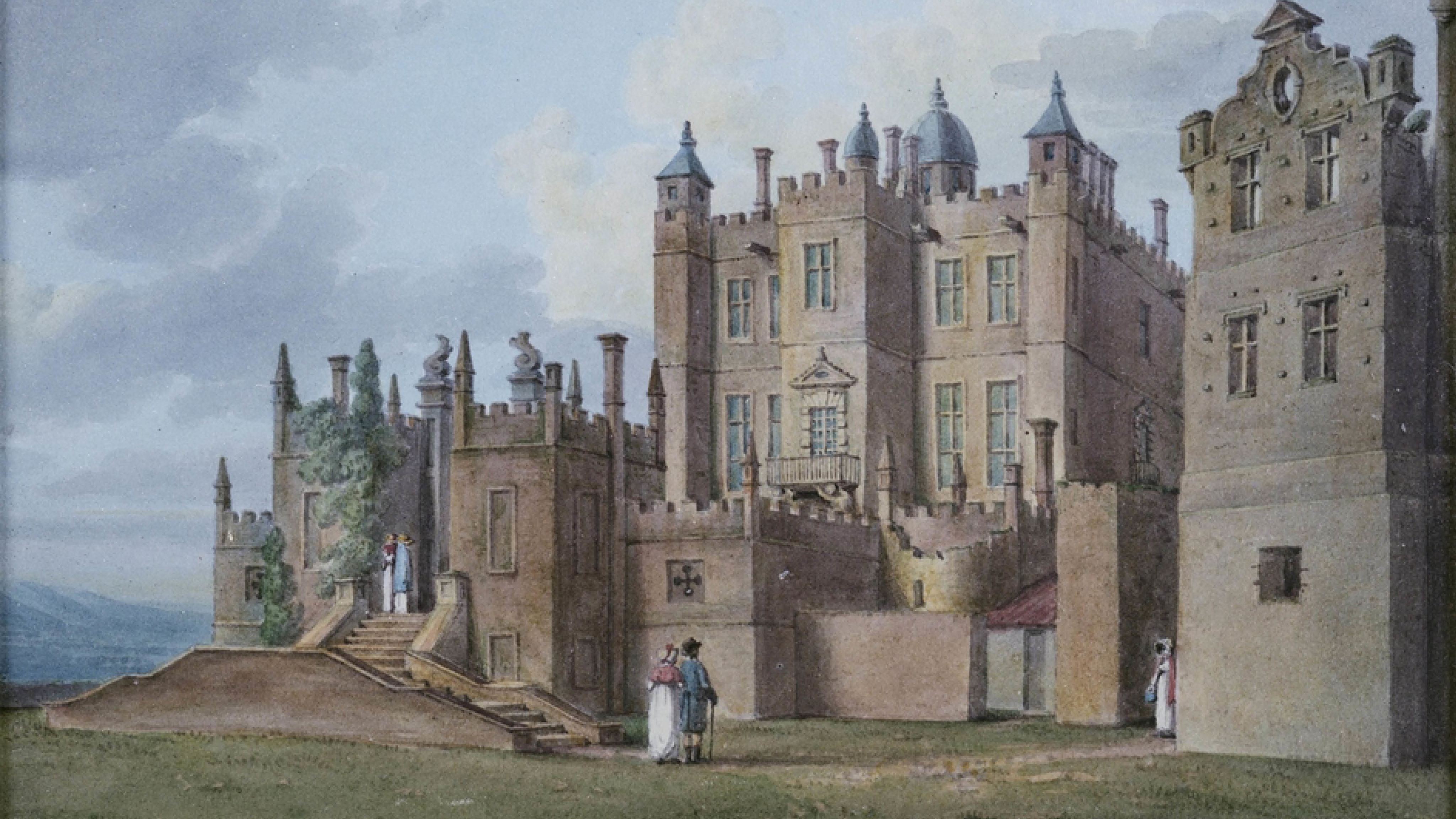
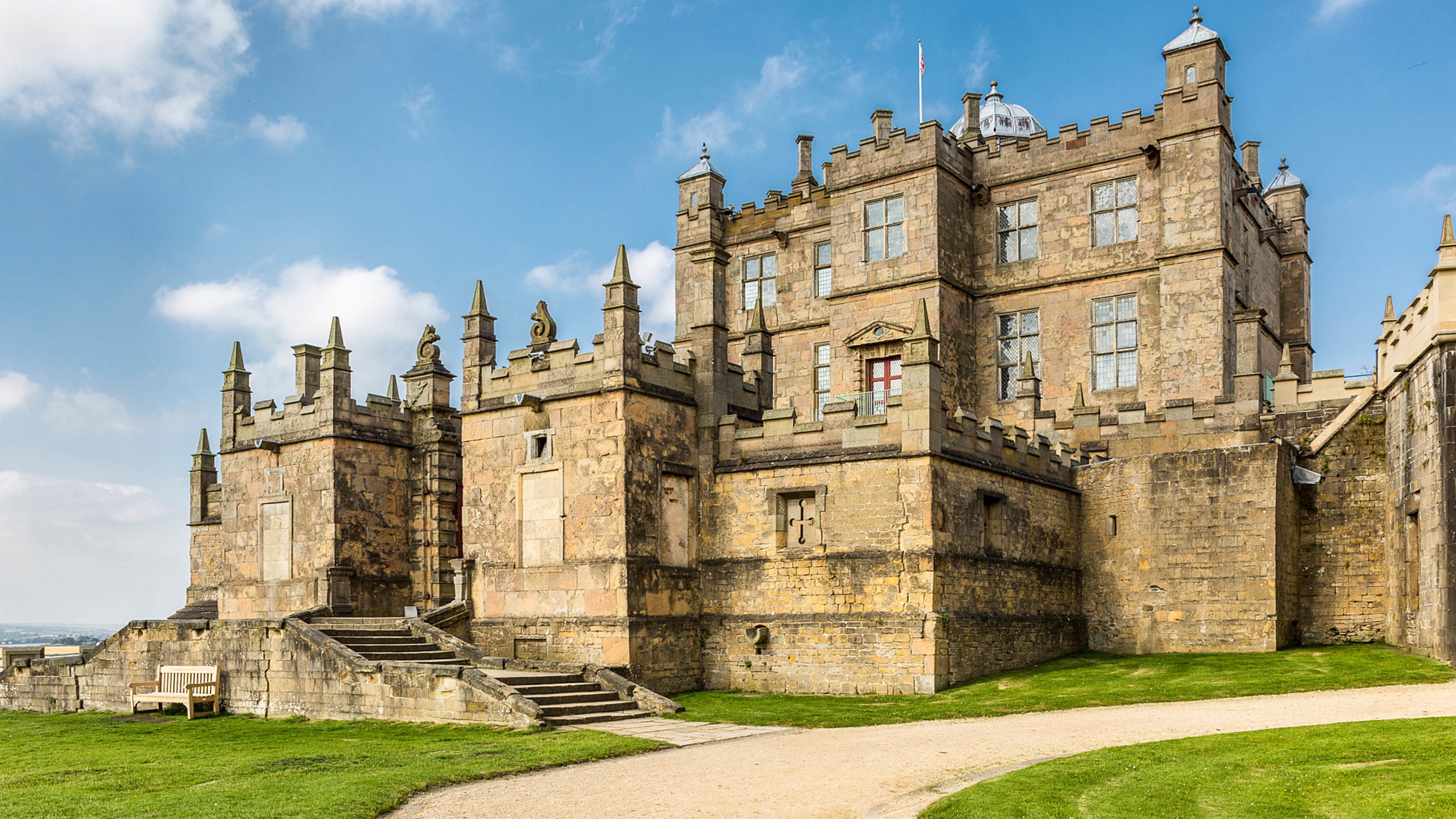
Bolsover Castle
Derbyshire
This watercolour of Bolsover Castle dates to around the 19th century and shows the Little Castle in the foreground, with a pair of figures in historical costume standing on top of the steps as a pair of figures in front of the main elevation watches another female figure approaching.

Left: The Little Castle from the South West, Hibbert, c. 19th century/Right: a modern-day view of The Little Castle
Left: The Little Castle from the South West, Hibbert, c. 19th century/Right: a modern-day view of The Little Castle
Today visitors can enjoy the same stunning views high above the Vale of Scarsdale as they bask in the summer sun at Bolsover Castle, an extraordinary 17th-century aristocratic retreat. A few highlights of the site include the Little Castle, which has remarkable wall paintings and interiors, and the Riding School, considered the earliest building of its kind in England to survive complete.
Families will also love the interactive exhibition in the stables, and kids can let their imaginations run wild in the castle-themed play area next to the café and gift shop.
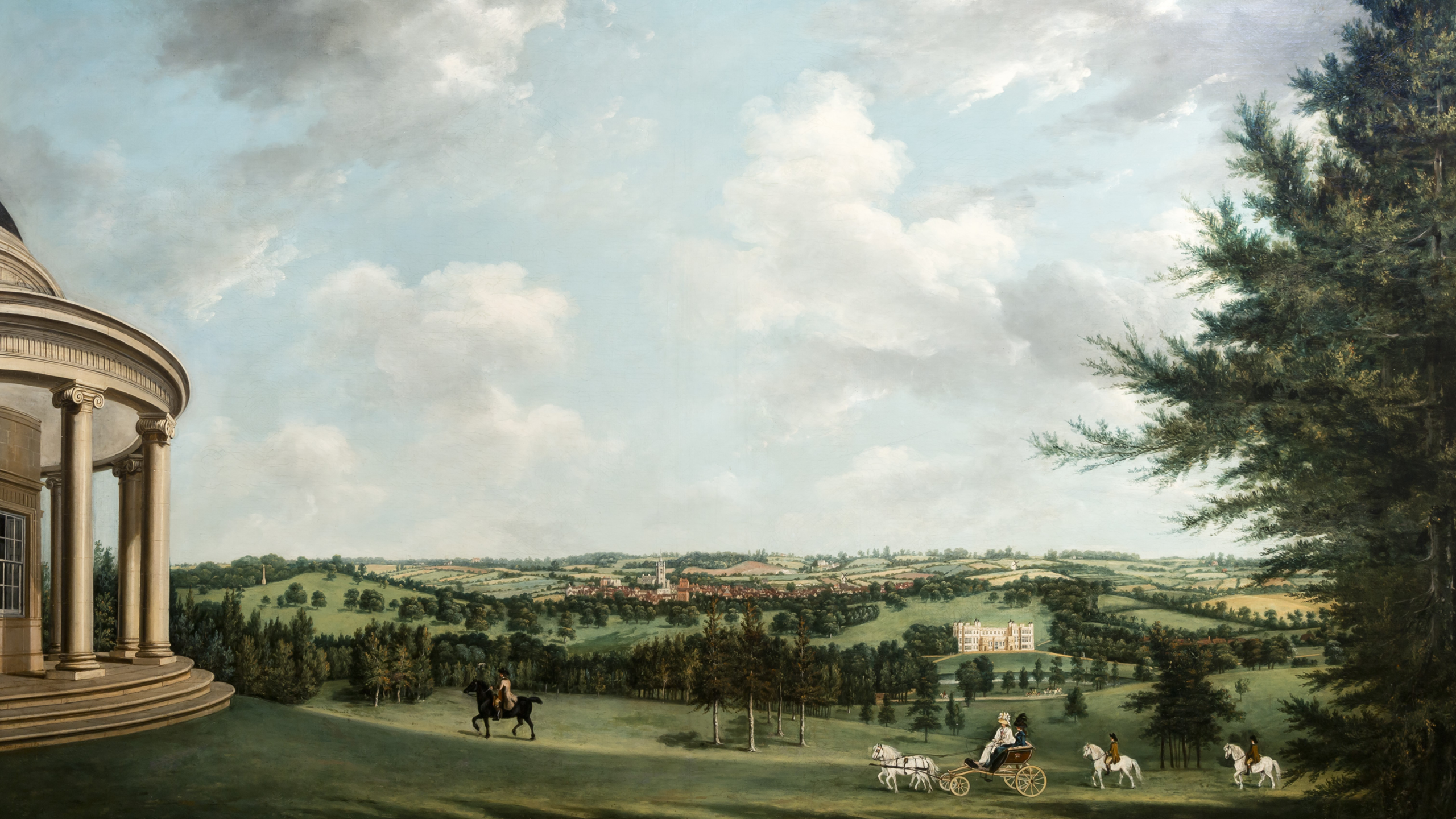
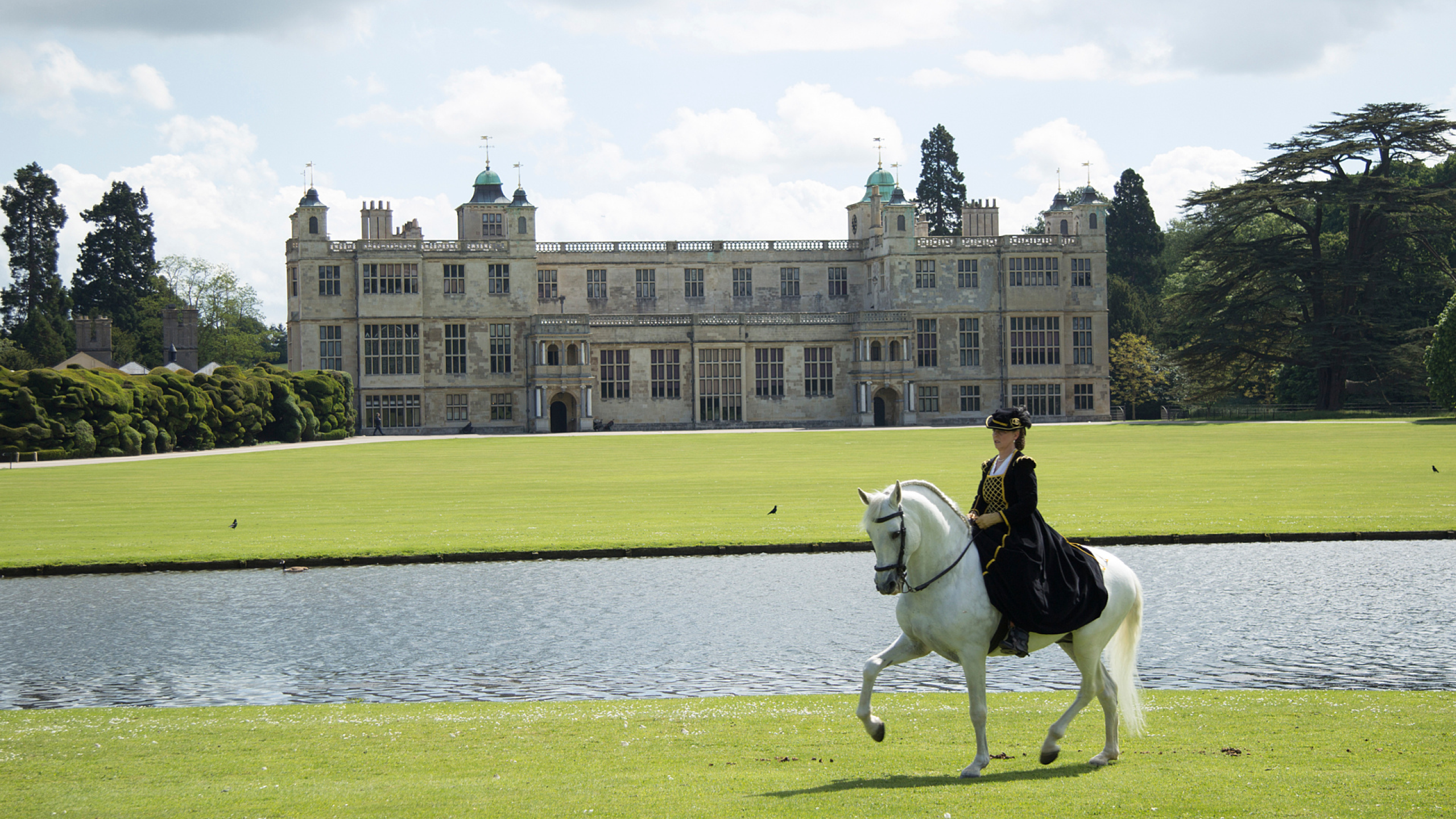
Audley End House and Gardens
Essex
Painter William Tomkins, created works that mainly focused on idyllic country estates up and down England, so it's natural he found inspiration looking out onto Audley End's rolling landscape.

View of Audley End from the Temple of Victory. Private Collection, on loan to English Heritage for display at Audley End
View of Audley End from the Temple of Victory. Private Collection, on loan to English Heritage for display at Audley End
Today, you can still explore the award-winning gardens and Capability Brown parkland, in much the same way Tomkins and others may have done during the 1700 and 1800s. There's also the servants wing, state rooms, stables and kitchen garden, revealing what life was like above and below stairs at a grand country house.
There’s plenty for families to do too, with a playground, working stables, hands-on fun in the Victorian nursery and action-packed special events held throughout the year.
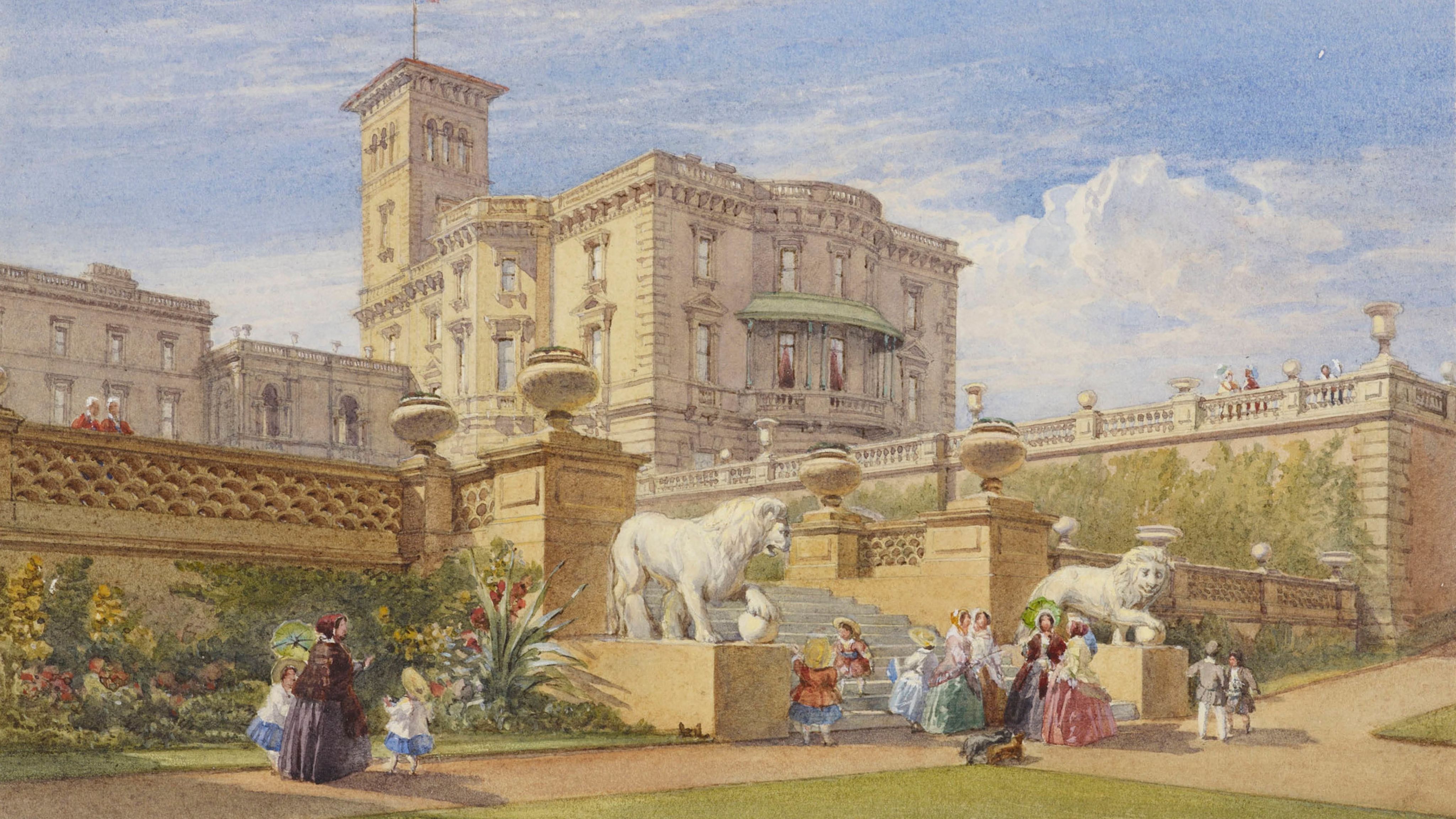

Osborne
Isle of Wight
The gardens at Osborne House, designed by Prince Albert, are a great example of the Victorian gardening style. Leitch’s watercolour features mass-produced garden sculptures on the new terracing. The lions at the base of the steps are cast in artificial stone by Austin & Seely, and are inspired by the the Medici lions in the Loggia dei Lanzi, Florence.

Left: Osborne House from below the terrace, William Leighton Leitch, Aug 1851. © Royal Collection Enterprises Limited 2024 | Royal Collection Trust/Right: The same lion sculptures at site today
Left: Osborne House from below the terrace, William Leighton Leitch, Aug 1851. © Royal Collection Enterprises Limited 2024 | Royal Collection Trust/Right: The same lion sculptures at site today
Today, a visit to Osborne offers the same sense of wonder that Queen Victoria felt as she spent her summers at the beloved holiday home. From flower-filled gardens, the quirky museum in the Swiss Cottage, to its very own beach where the royal children learnt to swim, Osborne is the perfect summer palace.
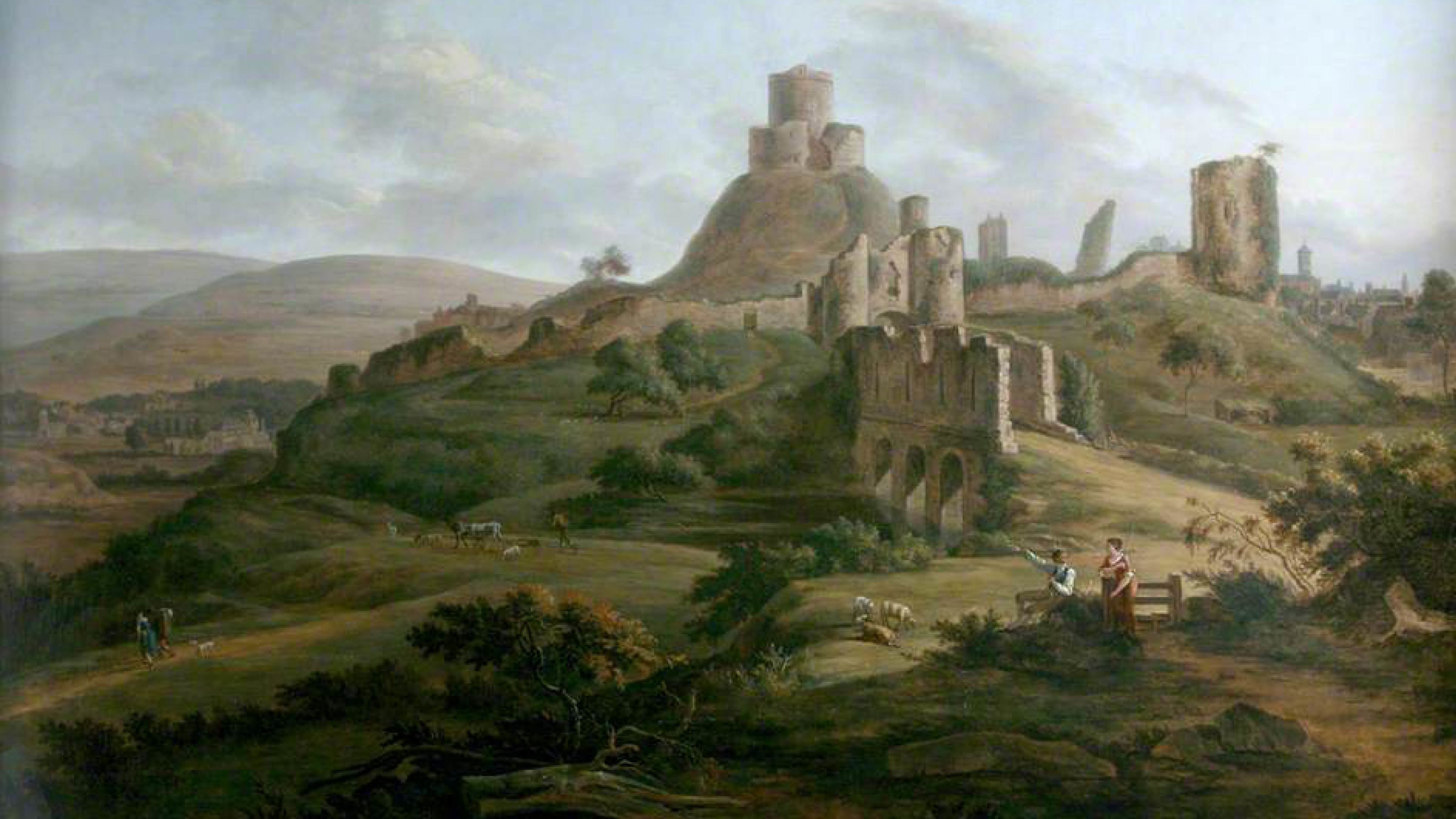

Launceston Castle
Cornwall
Painted by Hendrik Frans de Cort, this depiction of Launceston Castle is the view from St Catherine's Hill. Looking at the condition of the north gate, it suggests that the view dates from before 1764, as in that year the gate was partially demolished. However, there's some confusion due the fact we can also see the motte and bailey before they were landscaped in the 1700s. In addition, to the right of the castle gate stands the watch tower (which fell in 1830) with the centre of Launceston itself to the right.

Left: Launceston Castle, Henrik Frans De Cort (1742-1810). © Historic England Archive/Right: Launceston Castle today
Left: Launceston Castle, Henrik Frans De Cort (1742-1810). © Historic England Archive/Right: Launceston Castle today
However, what's certain is the remarkable views this Norman castle offers visitors. Launceston was the former capital of Cornwall and the castle, commanding the town and surrounding countryside, its presence controlled the main entry route into the county.
Unlock the castle’s 1000 year history from one of Cornwall’s great strongholds, to a bleak prison, to World War II hospital. Despite its tumultuous past, the castle grounds are an ideal setting for a family picnic. As you take in the stunning scenery, let your imagination transport you to the hustle and bustle of castle life.
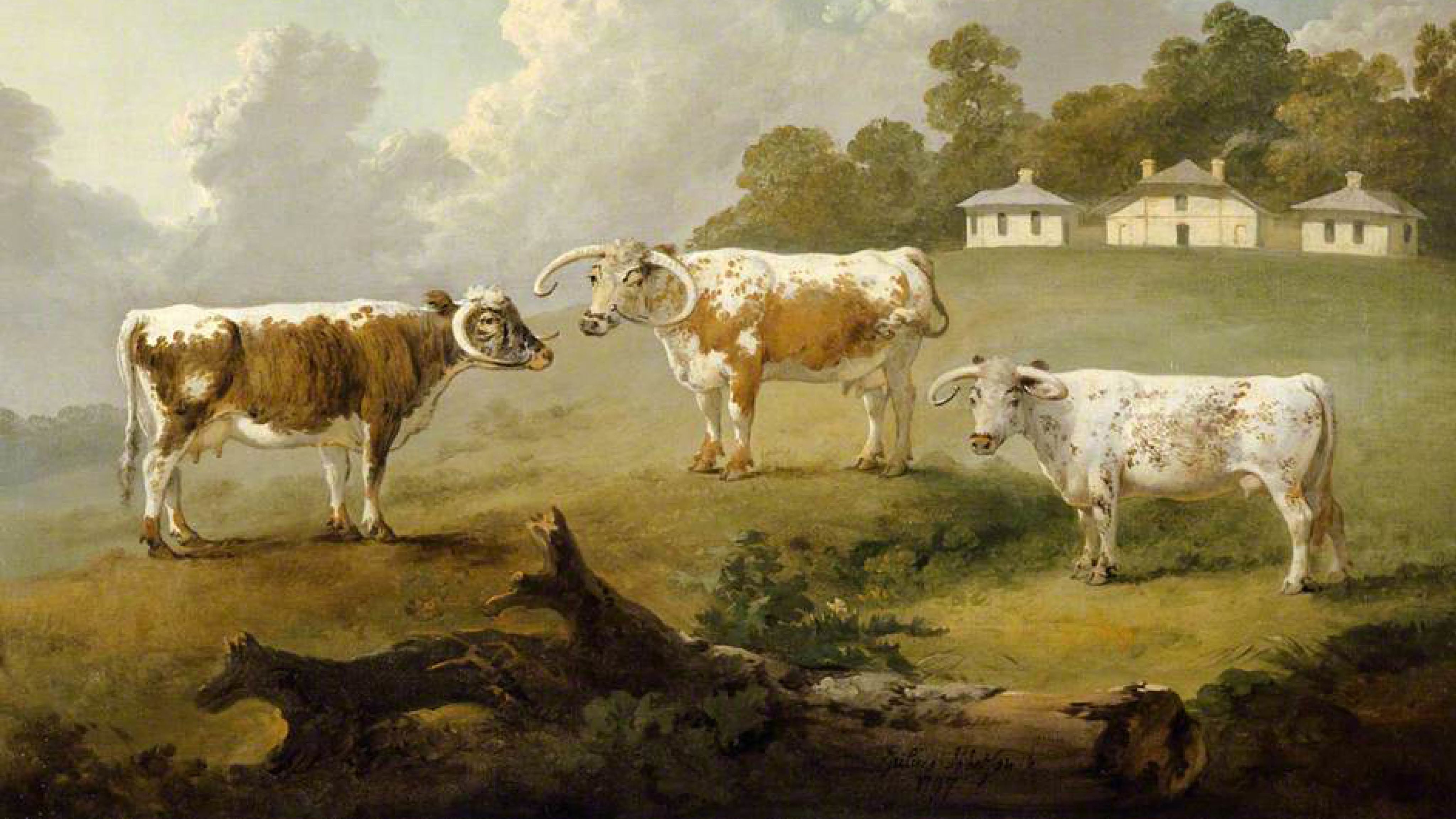

Kenwood
London
The tranquil scene of three long-horned cows grazing on the grounds of Kenwood may seem strangely provincial for a site located just on the edge of Hampstead Heath. However, much of the Humphrey Repton landscape is as it was when this painting was completed during the late Georgian period.

Left: Three Long-Horned Cattle, Julius Caesar Ibbetson (1759–1817). © Historic England Archive/Right: Modern-day image of the dairy at Kenwood
Left: Three Long-Horned Cattle, Julius Caesar Ibbetson (1759–1817). © Historic England Archive/Right: Modern-day image of the dairy at Kenwood
The dairy, featuring in the background of the painting has been restored to its former state, reflecting the dairy commissioned by the 2nd Earl of Mansfield the Earl’s wife, Louisa. Tending a dairy was then a fashionable hobby for aristocratic women, following the example of the French queen Marie Antoinette. But such dairies were still functional, and this one at Kenwood would have supplied the house with butter, milk and cream, while ice was stored in the ice-house below.
Kenwood remains one of the great examples of the Georgian country villa, with its breath-taking interiors and stunning world-class art collection. There's also lots of children's activities, a café to relax in and acres of grounds to stretch your legs
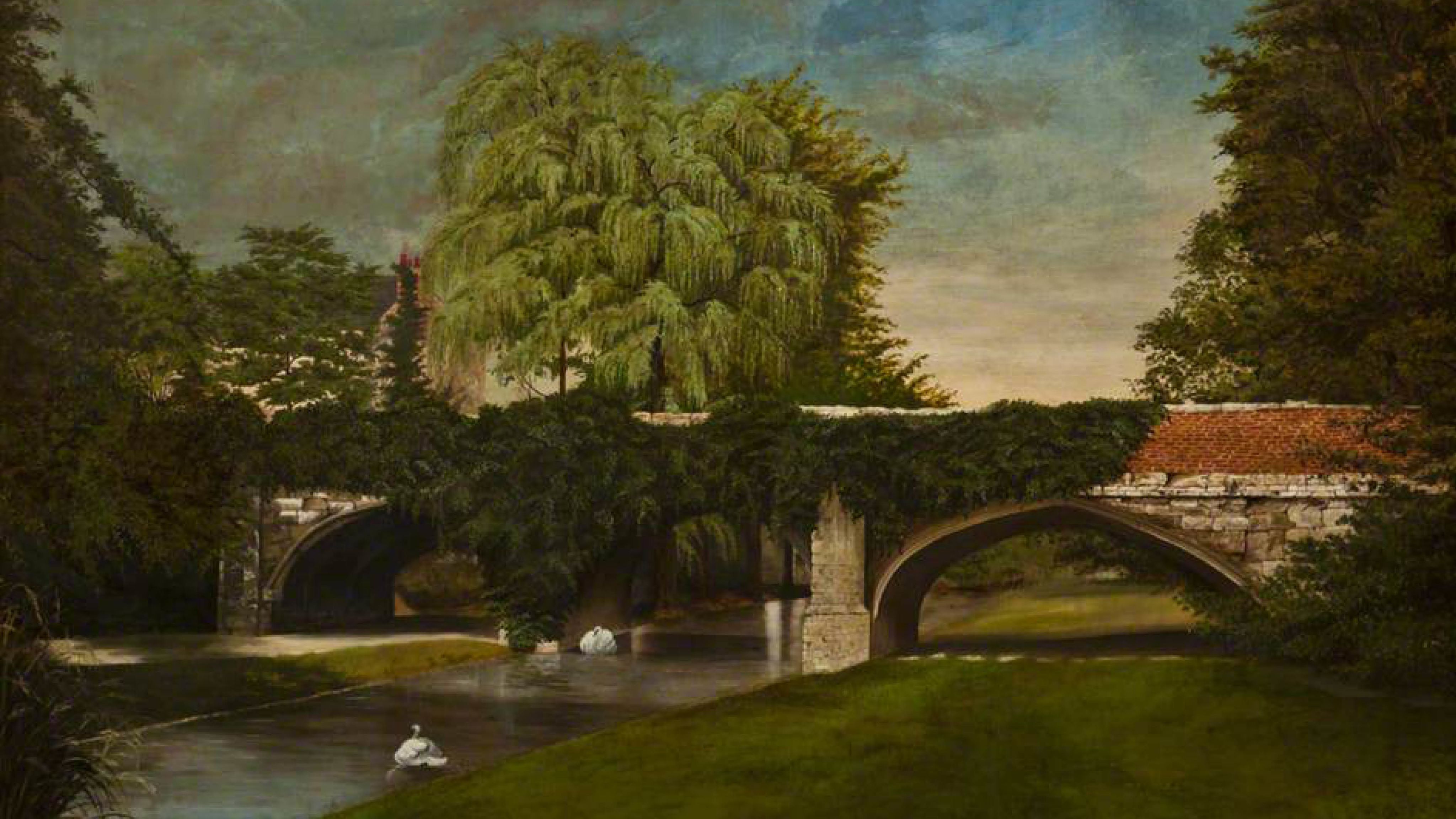
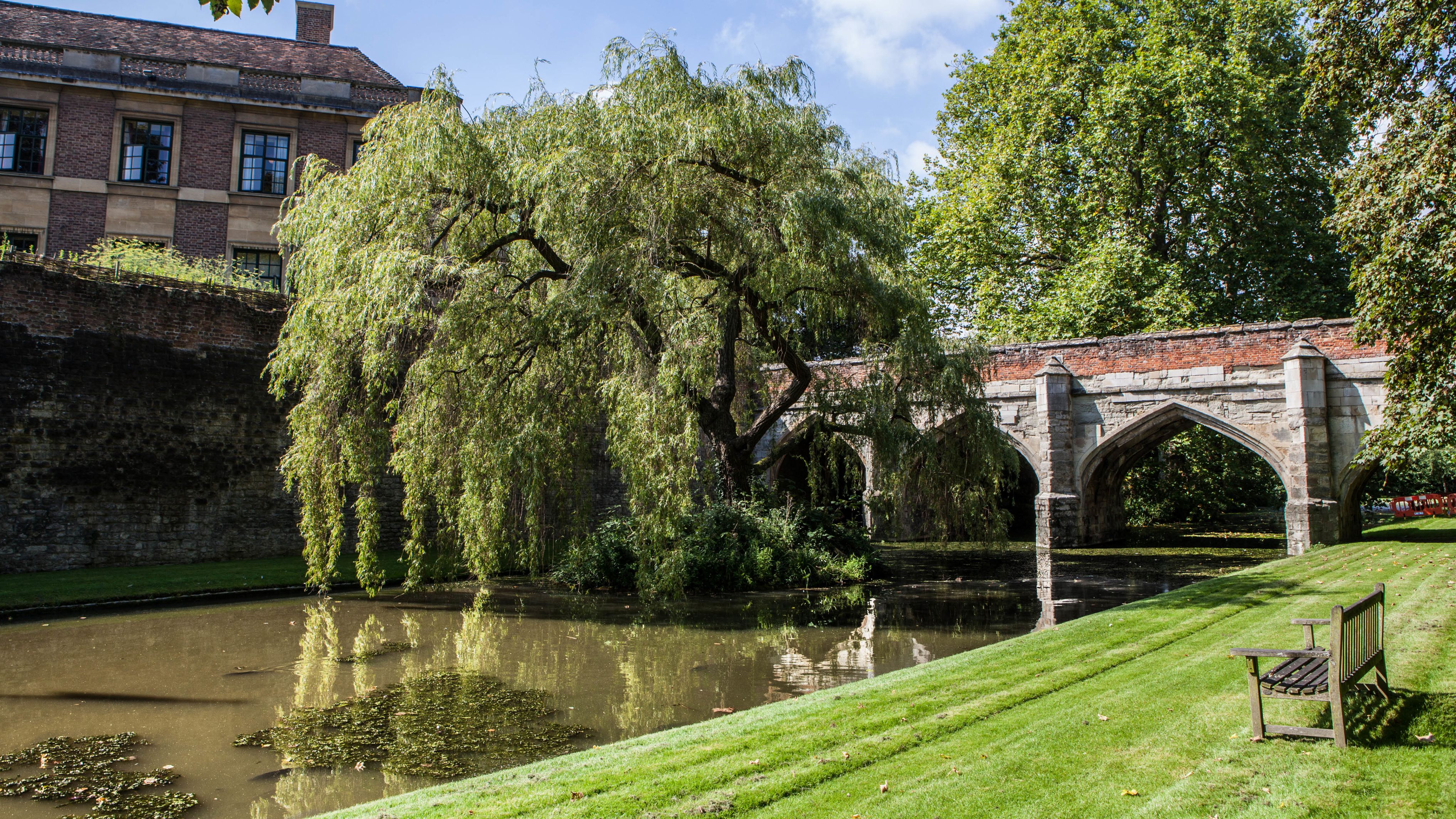
Eltham Palace and Gardens
London
This scene, by Robert Thomas Hawker, shows Eltham's iconic moat bridge, considered London's oldest working bridge, as a seemingly hazy summer evening draws in.

Left: Eltham Bridge, Robert Thomas Hawker (1857–1932). © Historic England Archive/Right: The moat and bridge from the same perspective today.
Left: Eltham Bridge, Robert Thomas Hawker (1857–1932). © Historic England Archive/Right: The moat and bridge from the same perspective today.
While many visitors marvel at Eltham’s modern 1930s interiors, masterminded by millionaires Stephen and Virginia Courtauld, the Palace has a much longer association with the Tudor and late Medieval courts. First recorded in the Domesday book, the Eltham estate was presented to King Edward II in 1305. It developed into one of the country's most favoured royal palaces, thanks in part to the 1,000 acre deer park on its doorstep.
Today, visitors can explore 19 acres of award-winning gardens and step inside a home that has seen kings, queens and everyone in between pass its threshold. Get a taste of the Courtaulds' extravagant lifestyle as you explore their unusual home, try on a range of period costumes, follow the family trail and explore the Rock Garden, with its pools and cascades running down to the moat.
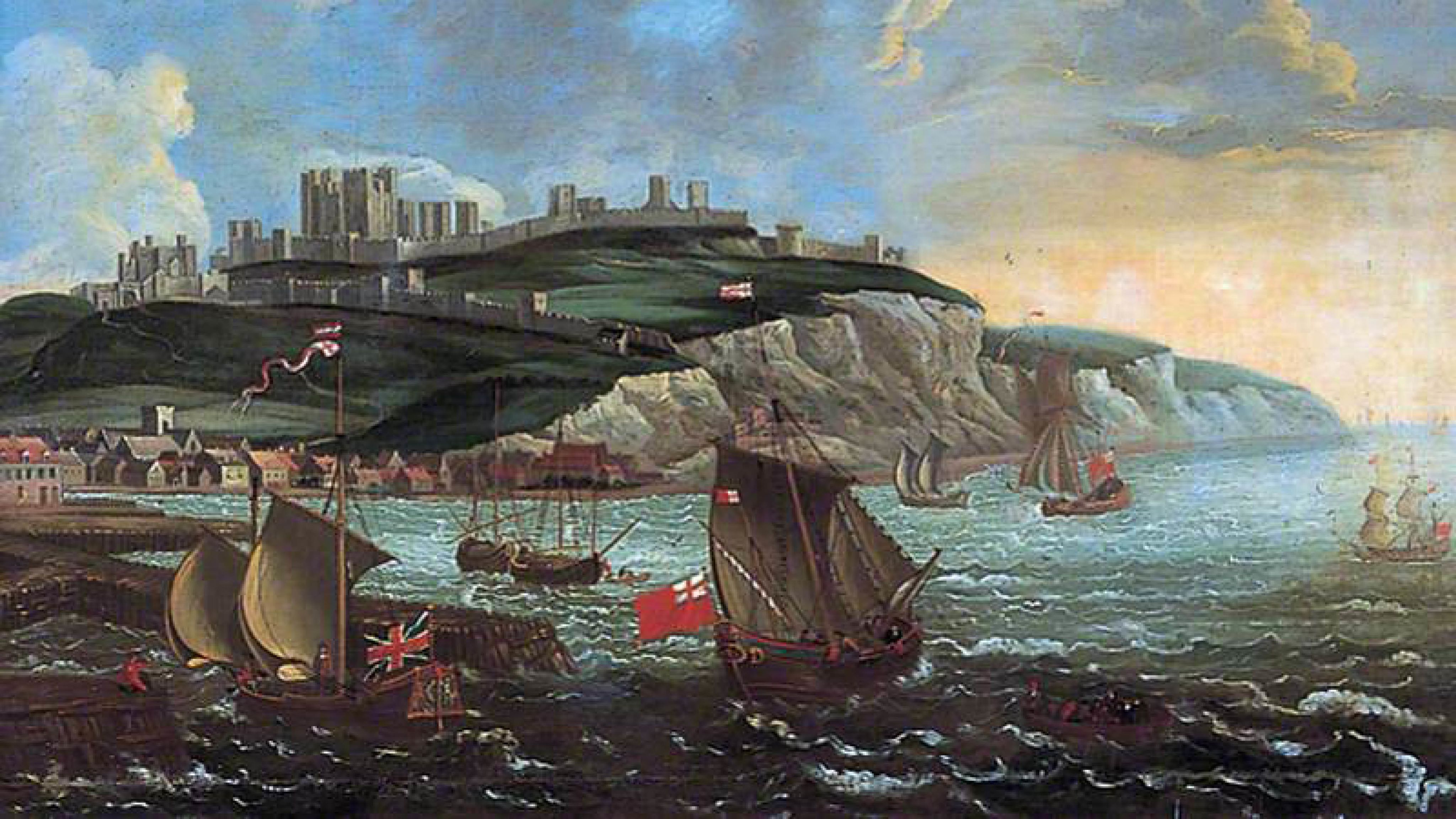

Dover Castle
Kent
This painting depicts Dover Castle from the sea with town of Dover to the left. Six ships are visible in the harbour with more on the horizon to the right.

Dover Castle and Town, Kent Martin Beckman (1634/1635–1702) (probably). © Historic England Archive
Dover Castle and Town, Kent Martin Beckman (1634/1635–1702) (probably). © Historic England Archive
Known as the 'key to England', this mighty fortress, built in 1066, has been the backdrop of epic sieges and hundreds of years of royal intrigue. A colossal site, that can easily take two days to explore in full, it features labyrinthine tunnels underneath the castle, the Great Tower which resembles Dover as it would have looked during Henry II's court and panoramic views out across the sea.
What's more, the newly opened Dover Castle Under Siege area at the north end of the castle, immerses visitors in the forgotten tale of the 1216-17 siege, unearthing how this pivotal event stopped the English throne from falling into French hands. You’ll also see what life was like for a soldier in 1800, when fears of French invasion reached another peak. Explore the barracks where the story will unfold through multimedia, interactive elements.
